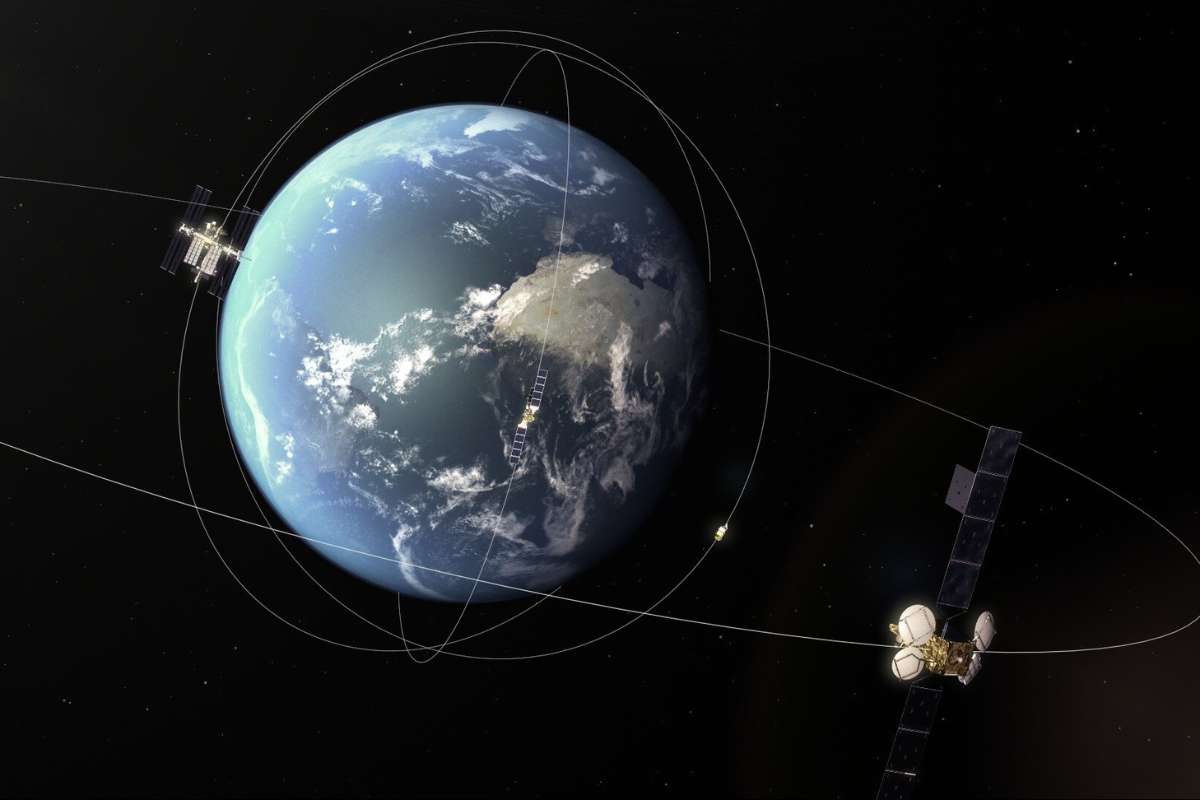When people hear the term satellite, they often think of massive objects floating far in space. However, not all satellites orbit at the same height. The low Earth orbit satellite is one of the most important and widely used satellite types today. These satellites sit much closer to Earth than others, quietly powering everything from GPS to video calls, weather forecasts, and global internet coverage.
Understanding low Earth orbit (LEO) satellites helps us grasp how modern life connects in more ways than we often realize. From how we communicate to how we monitor climate change, these satellites play a significant role in our daily lives, most of the time without us even knowing they’re there.
What is a Low Earth Orbit Satellites?
A low Earth orbit satellite, often called a LEO satellite, is an artificial satellite that orbits the Earth at an altitude ranging between 160 and 2,000 kilometers (100 to 1,200 miles). These satellites travel at high speeds—about 28,000 kilometers per hour—and can complete one full orbit in roughly 90 to 120 minutes.
Their closeness to Earth allows them to transmit data quickly, with low latency, making them suitable for real-time communication, Earth imaging, and navigation. However, because they only cover a small portion of Earth’s surface at once, they’re often launched in groups or constellations to provide broader coverage. This strategy powers satellite internet services like SpaceX’s Starlink and similar initiatives.
From defense systems to disaster monitoring, the LEO is designed to serve tasks that require high speed, accuracy, and immediate data transmission.
✦ Real-World Uses of LEO Satellites

LEO satellites are far more than just high-tech gadgets floating in space. Thanks to their unique advantages, LEO satellites have quickly become the backbone of emerging technologies in both commercial and government sectors.
They serve a variety of essential roles that touch everyday life:
- High-Speed Internet Access: In rural and underserved regions where traditional broadband is unavailable, low-earth orbit satellites provide an effective, fast, and reliable connectivity solution.
- Environmental Monitoring: LEO satellites collect detailed climate and weather data for forecasts, wildfire tracking, and long-term climate research.
- Navigation and Tracking: LEO systems enable precise GPS-based applications, including shipping, aviation, and rideshare apps.
- Military and Security: Their ability to quickly collect high-resolution images and relay data makes them critical in surveillance and tactical operations.
✦ Top 4 Types of Low Earth Orbit Satellites:

Satellites don’t all orbit at the same distance or speed. Their orbits are carefully chosen based on what each satellite needs to do. Here’s how the low Earth orbit satellite compares with other common types:
1. Low Earth Orbit (LEO)
Located between 160 and 2,000 kilometers above Earth, these satellites are fast, cost-effective to launch, and best for high-speed data services. Their only limitation is their small coverage footprint, so multiple satellites are needed for continuous service.
2. Medium Earth Orbit (MEO)
These satellites orbit at altitudes of about 2,000 to 35,786 kilometers. MEO is typically used for navigation systems like GPS and Galileo. While they provide broader coverage per satellite, the increased distance results in slower signal speeds than LEO.
3. Geostationary Orbit (GEO)
GEO satellites orbit around 35,786 kilometers above the equator. Because they match Earth’s rotation, they appear fixed in the sky. Weather forecasting, television broadcasting, and long-distance communications ideally use them. However, they suffer from higher latency due to the distance.
4. Highly Elliptical Orbit (HEO)
Unlike circular orbits, HEO satellites follow an elongated oval path. These are especially useful for focusing on polar regions, where other orbits have limited visibility. HEOs are typically used for specialized communication and observation missions.
Each type has a distinct purpose, but the low Earth orbit satellite is often the top choice for fast, real-time, and cost-effective operations.
✦ Benefits and Limitations of LEO Satellites:
The rise of LEO technology is not just hype—it’s a reflection of real-world needs. These satellites bring several clear benefits:
- Low latency for time-sensitive communications like voice, video, and remote sensing
- Lower launch costs due to reduced distance and smaller satellite sizes
- Frequent passes over the same region, enabling rapid data updates and monitoring
That said, low Earth orbit satellites are not without challenges. Because they orbit so closely, they don’t stay over one area for long, requiring coordinated constellations. They also have a shorter lifespan—typically 5 to 7 years—due to atmospheric drag, meaning regular replacements are needed.
Space debris is another growing concern. As more companies launch LEO constellations, collisions and cluttered space risk increase, prompting calls for better space traffic management.
✦ The Future of Low Earth Orbit Satellites

As the demand for global connectivity, environmental data, and innovative technology expands, so does the role of the low Earth orbit satellite. By the end of the decade, tens of thousands of LEO satellites are expected to be active, offering internet to remote villages, supporting autonomous vehicles, and aiding in real-time disaster response.
Advancements in satellite miniaturization, propulsion, and coordination will only make LEO systems more effective. However, this rapid growth also calls for responsible development. Governments, space agencies, and private operators must collaborate on sustainable practices that ensure safe, long-term use of LEO.
From agriculture to education, the future powered by low Earth orbit satellites looks high-tech and deeply human-centered.
Conclusion
While they may be orbiting high above us, low Earth orbit satellites have become essential to modern life on the ground. Their speed, versatility, and cost-efficiency make them a driving force behind how we connect, observe, and respond to the world.
As industries evolve and digital infrastructure becomes more global, the influence of LEO satellites will only grow. Recognizing their value now helps us better prepare for a future where space isn’t just a final frontier—it’s part of our everyday toolkit.
✦ Frequently Asked Questions (FAQs)
Q1. Why are low Earth orbit satellites growing in popularity?
They’re affordable, fast, and offer real-time communication for modern tech needs.
Q2. How long do low Earth orbit satellites typically last?
Most operate for 5 to 7 years before atmospheric drag brings them down.
Q3. Can LEO satellites provide internet?
Yes, they’re widely used to bring high-speed internet to remote areas.
Q4. What is the main advantage of a low Earth orbit satellite?
Its low altitude allows for faster data transfer and more explicit images.
Q5. How do LEO satellites differ from GPS satellites?
GPS satellites orbit higher in MEO, while LEO satellites orbit closer and faster.
Q6. Are low Earth orbit satellites visible from Earth?
Yes, they can often be seen moving quickly across the night sky.
Q7. Do LEO satellites work in groups?
Yes, they’re usually launched in prominent constellations for continuous coverage.
Q8. What happens when a LEO satellite stops working?
It re-enters Earth’s atmosphere and burns up or is replaced.
Q9. Is space getting crowded with these satellites?
Yes, and managing orbital space responsibly is now a global priority.
Q10. Can LEO satellites help during disasters?
Absolutely—they offer real-time imaging and emergency communication support.


















